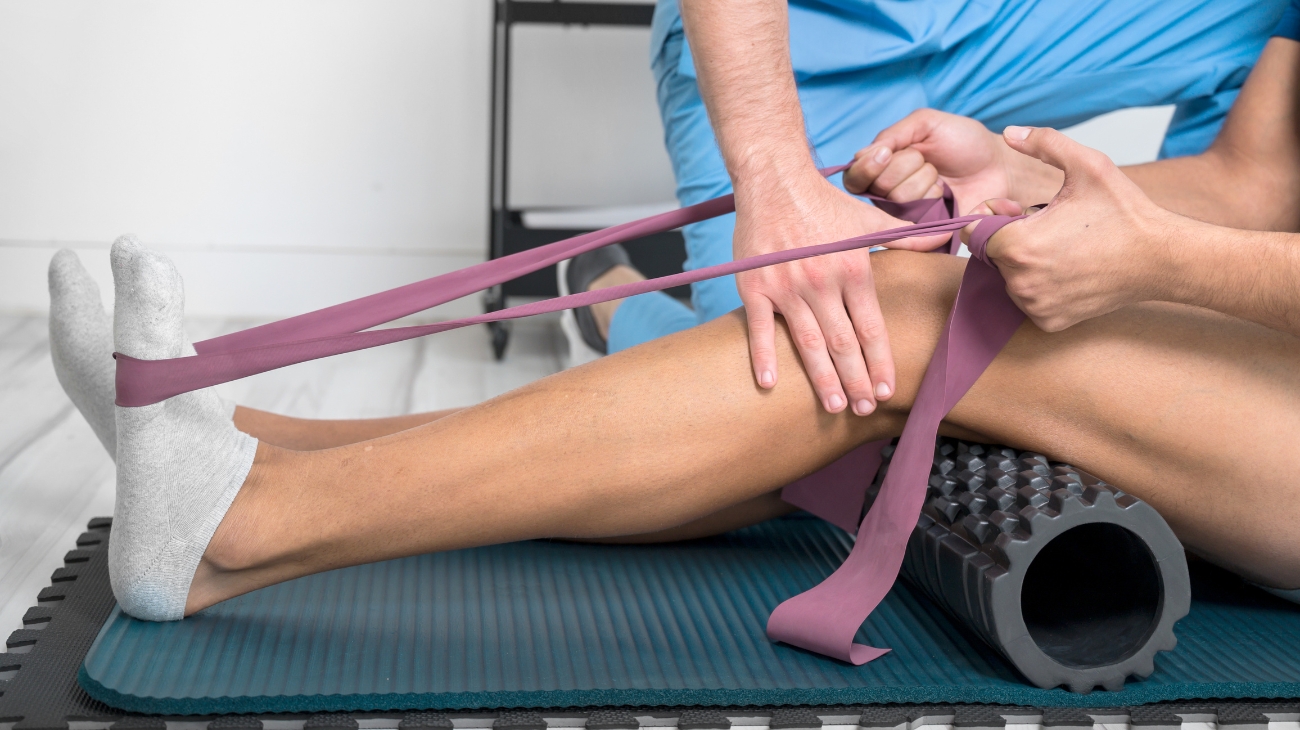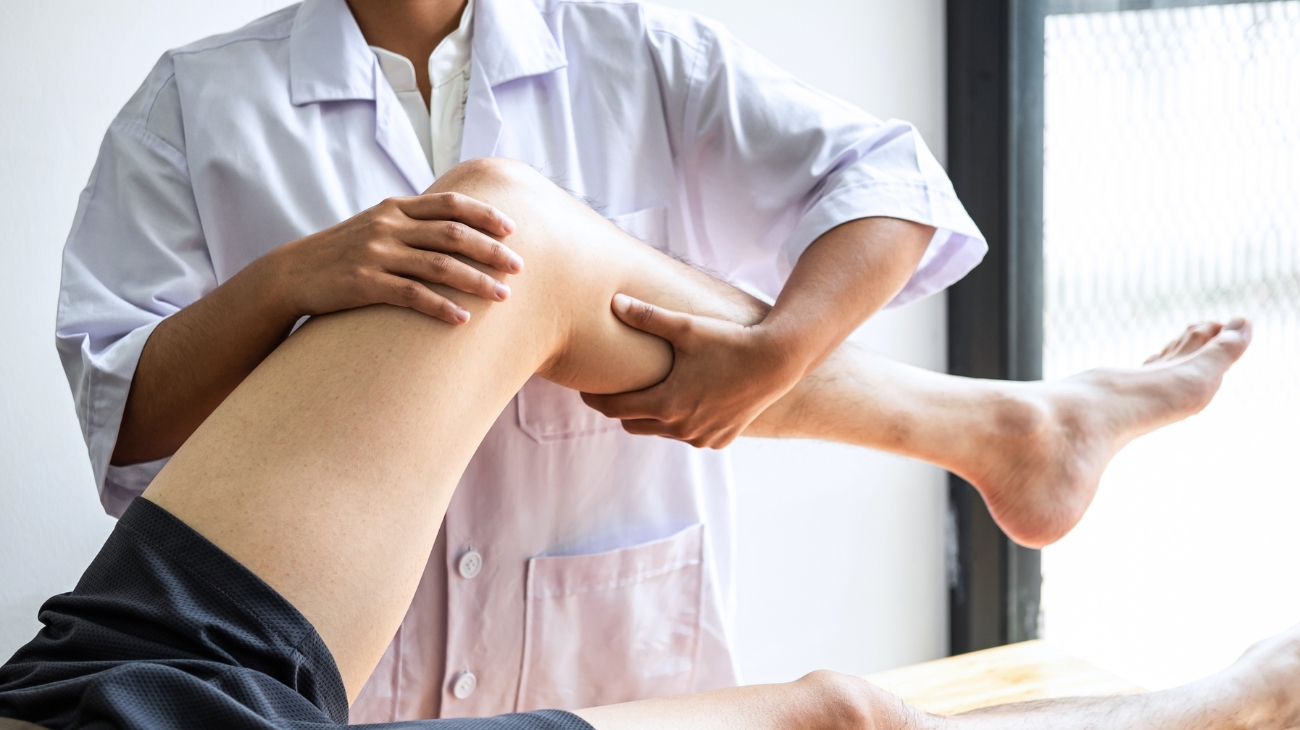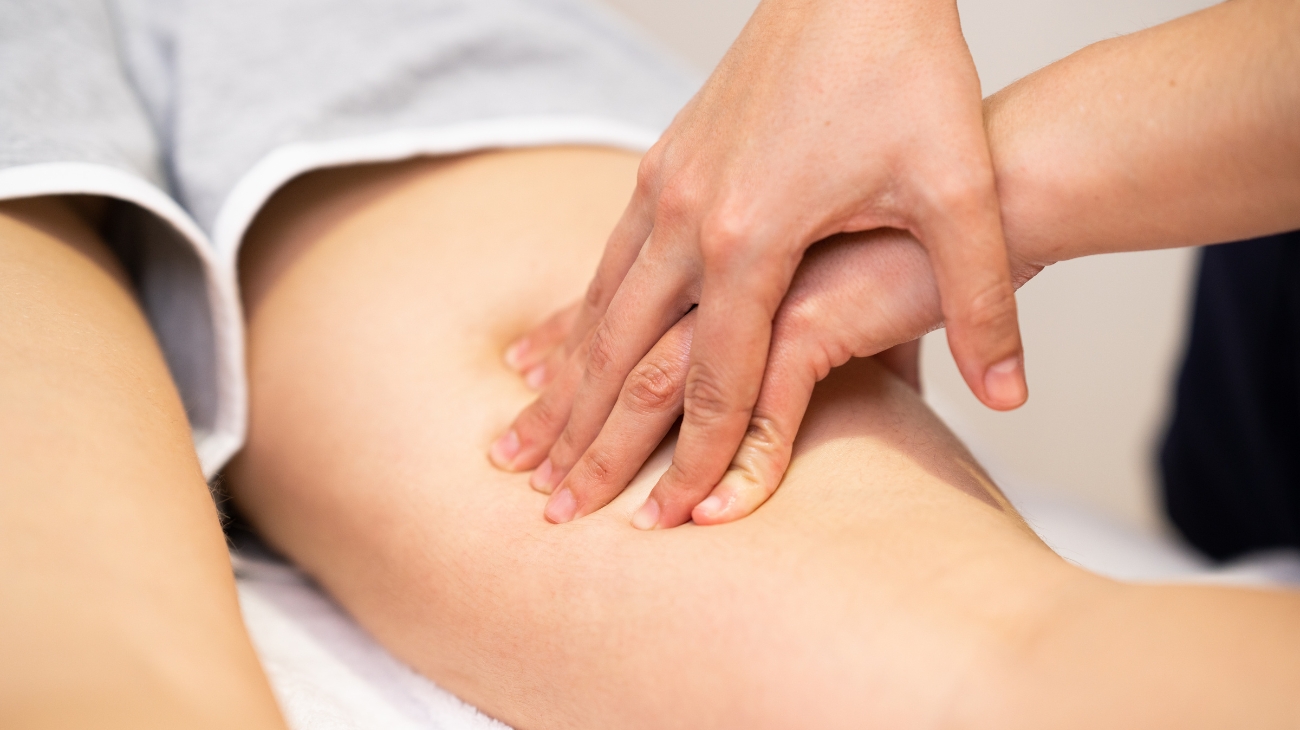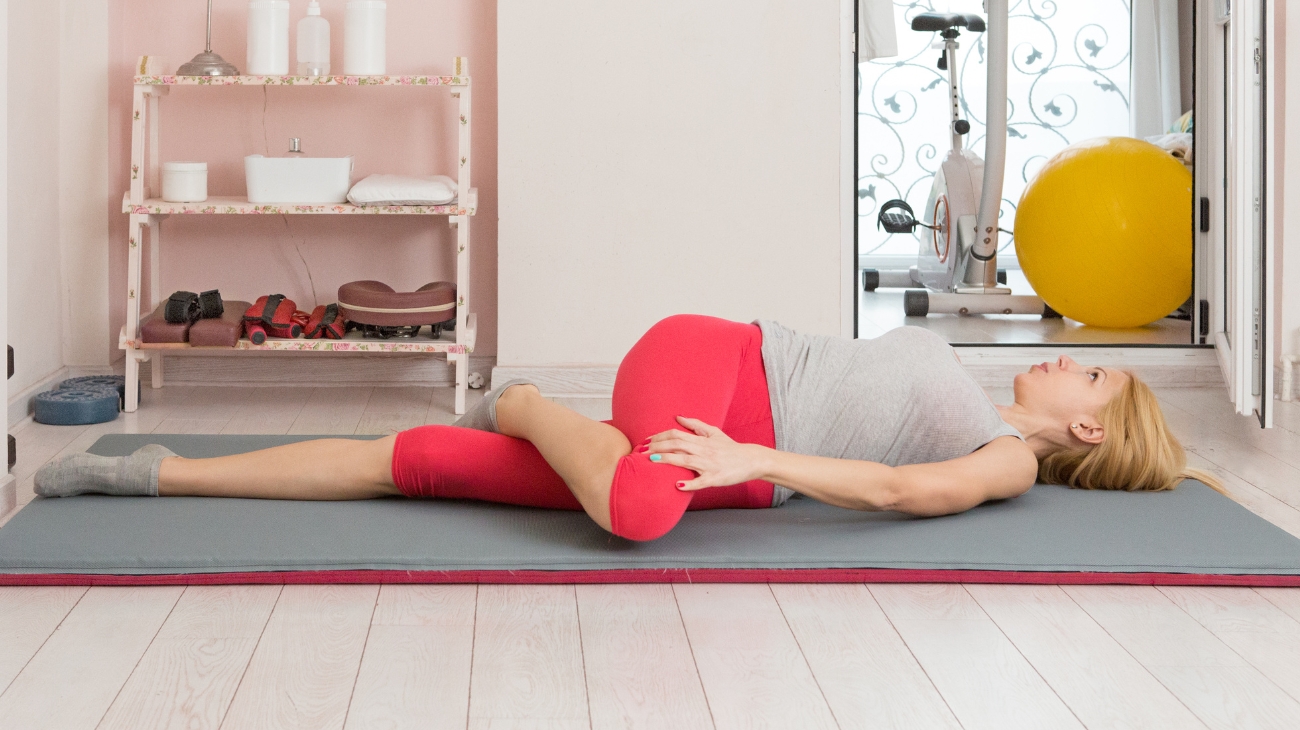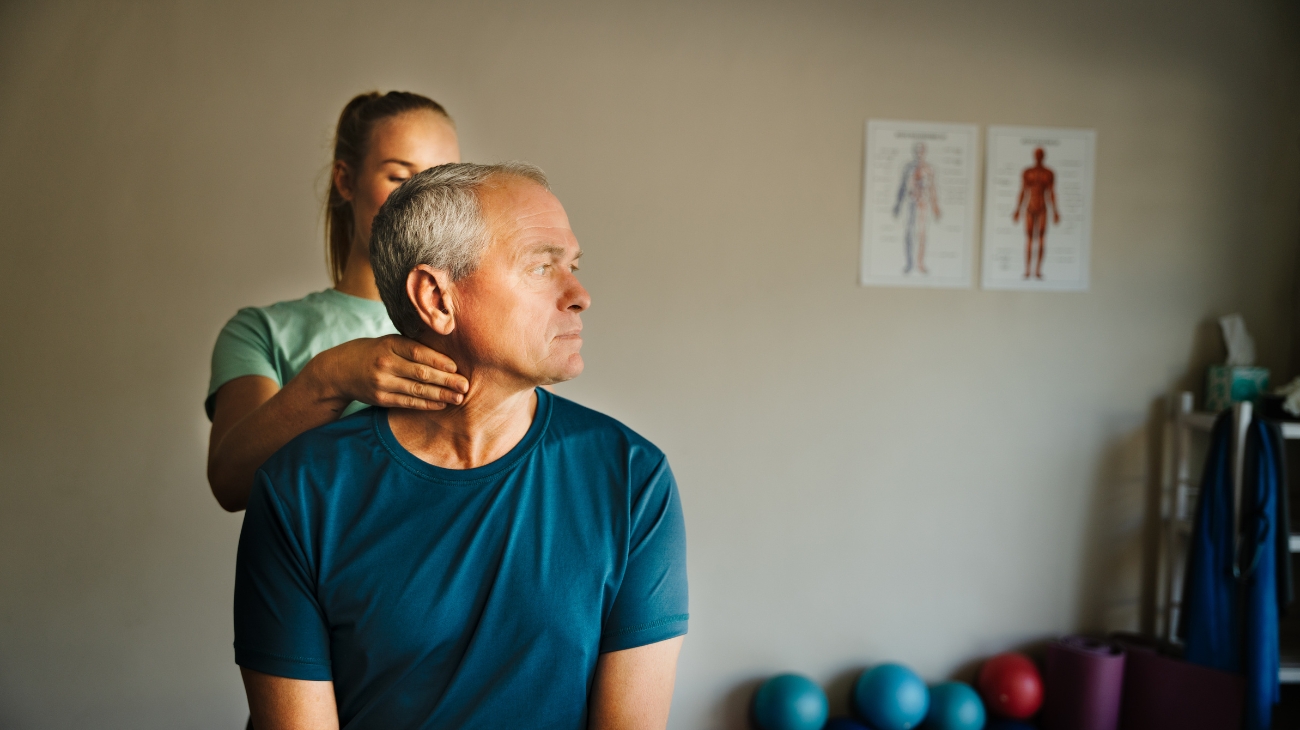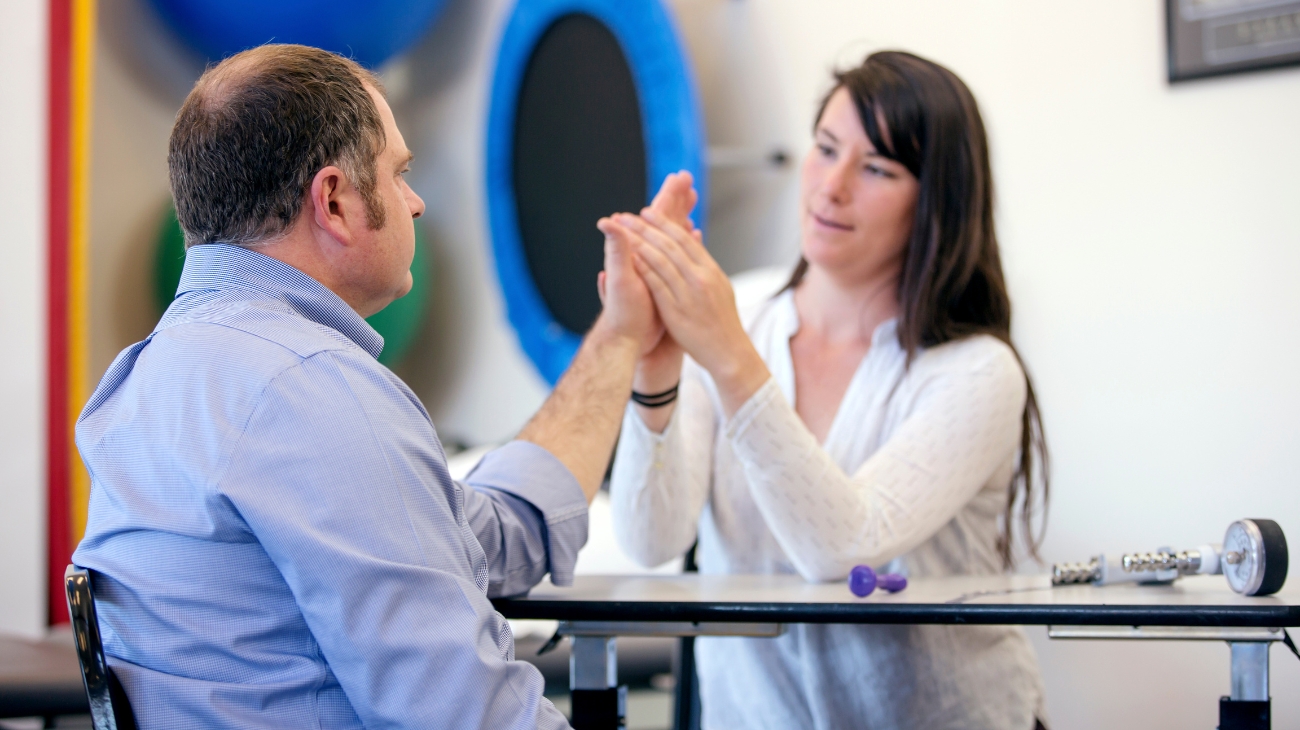It is important to know the best exercises for hamstring muscle rehabilitation and pain relief because the hamstrings play a crucial role in lower extremity movement and stability. They are responsible for bending the knee and extending the hip, which are essential movements for walking, running, and jumping. Hamstring injuries are common in athletes and can significantly limit their ability to perform these movements, leading to decreased performance and potential for reinjury.
Rehabilitation and mobility exercises for the hamstrings can improve muscle strength, flexibility, and endurance, which can help prevent future injuries and reduce pain. Strengthening exercises can also help restore proper movement patterns and joint mechanics, leading to more efficient and effective movement.
Best hamstring muscles rehab and mobility exercises
Flexibility exercises can increase range of motion and reduce muscle stiffness, which can also help prevent future injuries. Overall, a well-designed rehabilitation and mobility program for hamstring injuries can not only help alleviate pain but also improve performance and prevent future injuries.
1 - Seated Forward Bend (Bands)
The Seated Forward Bend with Elastic Bands is an effective stretch to increase flexibility in the hamstrings and lower back:
- Sit on the floor with your legs extended straight in front of you.
- Loop an elastic band around your feet, holding the ends in each hand.
- Sit up tall, engage your core, and maintain a straight back.
- Exhale as you gently hinge at your hips, allowing your upper body to bend forward while keeping your back straight.
- Hold the stretch for 20-30 seconds while breathing deeply and feeling the gentle pull from the elastic band.
Muscles involved:
- Hamstrings: They are stretched during the forward bend.
- Lower Back: The lower back muscles are lengthened and relaxed during the stretch.
2 - Standing Hamstring Stretch
The Standing Hamstring Stretch is a simple yet effective exercise for increasing flexibility in the hamstrings:
- Stand with your feet hip-width apart.
- Extend one leg straight in front of you, with the toes pointing upward.
- Keep your back straight and chest lifted.
- Hinge at your hips, pushing your buttocks back while maintaining a straight spine.
- Reach for your toes with your hands, keeping the extended leg straight.
- Hold the stretch for 20-30 seconds, feeling the gentle pull in the hamstring of the extended leg.
Muscles involved:
- Hamstrings: They are the primary target of this stretch and are responsible for flexing the knee and extending the hip.
3 - Supine Hamstring Stretch (Bands)
The Supine Hamstring Stretch with elastic bands is an effective exercise for increasing hamstring flexibility:
- Lie on your back with your legs extended.
- Loop an elastic band around one foot, holding the ends of the band with both hands.
- Slowly lift your leg with the band attached, keeping your knee straight. The band provides resistance.
- Gently pull your leg toward your chest, feeling the stretch in your hamstring.
- Hold the stretch for 20-30 seconds, ensuring you maintain controlled breathing.
- Repeat the stretch on the other leg.
Muscles involved:
- Hamstrings: The primary target of this stretch, responsible for knee flexion and hip extension.
- Hip Flexors: Engage to stabilize the opposite hip.
4 - Swiss Ball Hamstring Curl (Bands)
The Swiss Ball Hamstring Curl with elastic bands is a fantastic exercise for strengthening the hamstrings and glutes:
- Lie on your back with your feet on a Swiss ball and a looped elastic band around your hips, anchored to a stable support.
- Place your arms at your sides for balance and stability.
- Lift your hips off the ground, forming a straight line from your shoulders to your feet.
- Bend your knees to roll the Swiss ball toward you, keeping your hips raised.
- Extend your legs to push the ball away, returning to the starting position.
Muscles involved:
- Hamstrings: The primary muscles responsible for knee flexion and hip extension.
- Gluteus Maximus: Engages to extend the hip and stabilize the pelvis.
- Lower Back and Core Muscles: Work to stabilize the spine and maintain balance.
5 - Hamstring Foam Rolling
Hamstring foam rolling is an effective self-myofascial release technique for relieving tension and promoting flexibility in the hamstrings:
- Sit on the floor with your legs extended.
- Place a foam roller beneath your thighs, just above the back of your knees.
- Support your body weight with your hands flat on the floor behind you.
- Lift your hips off the floor and start rolling your hamstrings on the foam roller.
- Move slowly, focusing on tender or tight areas, and spend about 20-30 seconds rolling each leg.
Muscles involved:
- Hamstrings: The main target of this exercise, the hamstrings, consist of the biceps femoris, semimembranosus, and semitendinosus muscles.
6 - Hamstring Wall Stretch
The hamstring wall stretch is an effective static stretching exercise to improve flexibility in the hamstrings and lower back:
- Lie flat on your back with your buttocks close to a wall.
- Extend your legs vertically and press them against the wall, keeping your knees straight.
- Flex your feet, pointing your toes toward your head.
- Relax and gently push your heels against the wall, feeling a stretch along your hamstrings and lower back.
- Hold the stretch for 20-30 seconds, deepening the stretch with each exhalation.
Muscles involved:
- Hamstrings: This stretch primarily targets the biceps femoris, semimembranosus, and semitendinosus muscles.
7 - Hamstring Eccentric Training (Ball)
Hamstring eccentric training with a Swiss ball is a valuable exercise to strengthen the hamstrings:
- Lie on your back with your heels on top of a Swiss ball and your arms by your sides for stability.
- Lift your hips off the ground to create a straight line from your shoulders to your heels.
- Dig your heels into the Swiss ball and roll it away from you by bending your knees.
- Extend your legs slowly, keeping your hips elevated.
- Lower your hips back to the ground, returning the ball to the starting position.
- Perform 3 sets of 10-12 repetitions.
Muscles involved:
- Hamstrings: This exercise targets the hamstring muscles, especially during the eccentric phase when they lengthen to control the ball's movement.
- Glutes: The gluteal muscles help stabilize your hips during the exercise.
- Lower back muscles: These muscles assist in maintaining spinal alignment.
- Core muscles: Engaging your core adds stability to your pelvis and lower back.
8 - Hamstring Curls Standing
Standing hamstring curls are a functional exercise that targets the hamstring muscles and can help improve strength, balance, and stability:
- Stand up straight with your feet hip-width apart. You may use a wall or stable surface for balance if needed.
- Engage your core muscles to maintain stability and keep your upper body upright.
- Bend one knee and flex your hip to bring your heel towards your buttocks. Simultaneously, engage your hamstring muscles in the back of your thigh.
- Hold the curled position briefly to feel the contraction in your hamstrings.
- Slowly lower your foot back to the starting position.
- Perform 3 sets of 10-12 repetitions for each leg.
Muscles involved:
- Hamstrings: These muscles, including the biceps femoris, semitendinosus, and semimembranosus, contract to flex the knee and bring the heel toward the buttocks.
- Glutes: The gluteal muscles assist in hip stability.
- Core muscles: Engaging your core helps you maintain balance and good posture throughout the exercise.
9 - Hamstring Curl in Prone (Bands)
The hamstring curl in a prone position with elastic bands is an effective exercise to strengthen the hamstring muscles, which are crucial for knee flexion and hip extension:
- Secure one end of an elastic band to a sturdy anchor point near the floor and attach the other end to your ankles.
- Lie face down on a mat or bench, with your legs extended and your hips in a neutral position.
- Engage your core muscles to support your lower back and pelvis.
- Flex your knees, bringing your heels toward your buttocks against the resistance of the elastic band.
- Hold the top position briefly to feel the contraction in your hamstrings.
- Slowly return your legs to the starting position.
- Perform 3 sets of 10-12 repetitions.
Muscles involved:
- Hamstrings: The primary muscles targeted, including the biceps femoris, semitendinosus, and semimembranosus, work to flex the knees.
- Glutes: The gluteal muscles contribute to hip extension.
- Lower back muscles: These stabilize the lower back during the exercise.
10 - Inchworm
The inchworm exercise is an excellent way to stretch and strengthen the hamstrings while also engaging the core and upper body:
- Start by standing with your feet hip-width apart.
- Hinge at your hips and bend forward, reaching your hands toward the floor. Keep your knees as straight as your flexibility allows.
- Walk your hands forward, keeping your legs straight and moving into a push-up position.
- Hold the push-up position for a moment, engaging your core and maintaining a straight line from head to heels.
- Walk your hands back toward your feet, maintaining the straight-leg position as long as possible.
- Stand up to return to the starting position.
- Repeat for several repetitions.
Muscles involved:
- Hamstrings: They are stretched during the forward bend and activated during the return walk.
- Core muscles: These are engaged to maintain stability in the push-up position.
- Upper body muscles: Your shoulders, triceps, and chest work while in the push-up position.
Best products for hamstring muscle pain relief
Bestseller
-
2 Thigh Compression Sleeve (Black/Gray)
$19.95 -
2 Thigh Compression Sleeve (Green/Navy)
$19.95 -
2 Thigh Compression Sleeve (Pink/Bordeaux)
$19.95 -
Acupressure Mat and Pillow (Black/Gray)
$49.95 -
Acupressure Mat and Pillow (Green/Navy)
$49.95 -
Acupressure Mat and Pillow (Pink/Bordeaux)
$49.95 -
Acupressure Pillow (Black/Gray)
$29.46 -
Acupressure Pillow (Green/Navy)
$29.46 -
Acupressure Pillow (Pink/Bordeaux)
$29.46 -
Heating Pad for Microwave Classic Bottle Shaped (Hearts)
$19.95 -
Heating Pad for Microwave Classic Bottle Shaped (Oxford)
$19.95 -
Heating Pad for Microwave Classic Bottle Shaped (Sport)
$19.95 -
High Density Foam Roller for Muscle (Black/Gray)
$29.95 -
High Density Foam Roller for Muscle (Green/Navy)
$29.95 -
High Density Foam Roller for Muscle (Pink/Bordeaux)
$29.95 -
Ice Massage Roller Ball (Black)
$39.95 -
Ice Massage Roller Ball (Green)
$39.95 -
Ice Massage Roller Ball (Pink)
$39.95 -
Microwave Heating Pad for Back Pain Relief (Extra Large) (Hearts)
$29.95 -
Microwave Heating Pad for Back Pain Relief (Extra Large) (Oxford)
$29.95 -
Microwave Heating Pad for Back Pain Relief (Extra Large) (Sport)
$29.95 -
Microwaveable Heating Pad for Pain Relief (Hearts)
$19.95 -
Microwaveable Heating Pad for Pain Relief (Oxford)
$19.95 -
Microwaveable Heating Pad for Pain Relief (Sport)
$19.95 -
Pack 2 In 1 Foam Roller High + Soft Density (Black/Gray)
$29.95 -
Pack 2 In 1 Foam Roller High + Soft Density (Green/Navy)
$29.95 -
Pack 2 In 1 Foam Roller High + Soft Density (Pink/Bordeaux)
$29.95 -
Soft Density Foam Roller for Recovery (Black)
$29.95 -
Soft Density Foam Roller for Recovery (Green)
$29.95 -
Soft Density Foam Roller for Recovery (Pink)
$29.95 -
Trigger Point Massage Stick (Black)
$14.95 -
Trigger Point Massage Stick (Green)
$14.95 -
Trigger Point Massage Stick (Pink)
$14.95
Most common hamstring injuries
The hamstring muscles are located on the back of the thigh and are responsible for bending the knee and extending the hip.
Common injuries to the hamstrings include:
- Hamstring Strain: This occurs when the muscle fibers or tendons in the hamstring tear, often from sudden acceleration or deceleration.
- Hamstring Tendinitis: This is an overuse injury that results in inflammation of the hamstring tendons.
- Hamstring Tendinopathy: This is a chronic degeneration of the hamstring tendons, often caused by repetitive strain.
- Hamstring Avulsion: This is a rare injury that occurs when the tendon completely tears away from the bone.
- Ischial Tuberosity Bursitis: This is inflammation of the bursa, a fluid-filled sac that cushions the hamstring tendons as they attach to the ischial tuberosity, a bony prominence in the pelvis.
- Nerve Impingement: This occurs when a nerve in the hamstring is compressed, often leading to pain, weakness, or numbness in the leg.
- Hamstring compartment syndrome: This occurs when the pressure within the muscle compartment increases, leading to compression of blood vessels and nerves.
Treatment for hamstring injuries often involves rest, ice, compression, and elevation, followed by a gradual return to activity. Physical therapy exercises can help to improve flexibility, strength, and range of motion, and prevent future injuries.
Benefits of rehab exercises for hamstring injuries
Rehabilitation and mobility exercises for hamstring injuries provide numerous benefits for individuals. Here are some of them:
- Pain relief: One of the primary benefits of rehabilitation exercises for hamstring injuries is that they can help alleviate pain and discomfort associated with the injury. Strengthening and stretching the hamstring muscles can help reduce muscle tightness and alleviate pain.
- Improved flexibility and range of motion: Hamstring injuries can cause tightness and reduced range of motion in the leg. Rehabilitation exercises can help increase flexibility and improve range of motion, allowing individuals to move more freely without discomfort.
- Improved muscle strength and endurance: Strengthening exercises can help rebuild the strength of the hamstring muscles, which is essential for proper function and support of the leg during movement.
- Prevention of future injuries: Regular rehabilitation exercises can help prevent future hamstring injuries by strengthening the muscles and improving flexibility, reducing the risk of strain or tear.
- Improved overall physical function: Rehabilitation exercises can contribute to overall physical function, making it easier for individuals to perform daily activities, such as walking, running, or climbing stairs, without discomfort or pain.
F.A.Q: Frequently asked questions
References
- Al Attar, W. S. A., Soomro, N., Sinclair, P. J., Pappas, E., & Sanders, R. H. (2017). Effect of injury prevention programs that include the Nordic hamstring exercise on hamstring injury rates in soccer players: a systematic review and meta-analysis. Sports Medicine, 47, 907-916. https://link.springer.com/article/10.1007/s40279-016-0638-2
- Dodenhoff, R. M., Dainton, J. N., & Hutchins, P. M. (1997). Proximal thigh pain after femoral nailing: causes and treatment. The Journal of Bone and Joint Surgery. British volume, 79(5), 738-741. https://online.boneandjoint.org.uk/doi/abs/10.1302/0301-620x.79b5.0790738
- Thorborg, K. (2012). Why hamstring eccentrics are hamstring essentials. British Journal of Sports Medicine, 46(7), 463-465. https://bjsm.bmj.com/content/46/7/463.short
- Ribeiro-Alvares, J. B., Marques, V. B., Vaz, M. A., & Baroni, B. M. (2018). Four weeks of Nordic hamstring exercise reduce muscle injury risk factors in young adults. The Journal of Strength & Conditioning Research, 32(5), 1254-1262. https://journals.lww.com/nsca-jscr/fulltext/2018/05000/four_weeks_of_nordic_hamstring_exercise_reduce.9.aspx
- Van Dyk, N., Behan, F. P., & Whiteley, R. (2019). Including the Nordic hamstring exercise in injury prevention programmes halves the rate of hamstring injuries: a systematic review and meta-analysis of 8459 athletes. British journal of sports medicine, 53(21), 1362-1370. https://bjsm.bmj.com/content/53/21/1362?fbclid=IwAR1MxcANewqHCNwZ9qH_tFqjabKzJQt0dMIoPSIeljaphm4VvA5_0a1cygU
- Noonan, T. J., & Garrett Jr, W. E. (1999). Muscle strain injury: diagnosis and treatment. JAAOS-Journal of the American Academy of Orthopaedic Surgeons, 7(4), 262-269. https://journals.lww.com/jaaos/Abstract/1999/07000/Muscle_Strain_Injury__Diagnosis_and_Treatment.6.aspx
- Malliaropoulos, N., Mendiguchia, J., Pehlivanidis, H., Papadopoulou, S., Valle, X., Malliaras, P., & Maffulli, N. (2012). Hamstring exercises for track and field athletes: injury and exercise biomechanics, and possible implications for exercise selection and primary prevention. British Journal of Sports Medicine, 46(12), 846-851. https://bjsm.bmj.com/content/46/12/846.short
- Butterfield, T. A. (2010). Eccentric exercise in vivo: strain-induced muscle damage and adaptation in a stable system. Exercise and sport sciences reviews, 38(2), 51-60. https://journals.lww.com/acsm-essr/Fulltext/2010/04000/Stretch_Activated_Ion_Channel_Blockade_Attenuates.00003.aspx
- Bourne, M. N., Timmins, R. G., Opar, D. A., Pizzari, T., Ruddy, J. D., Sims, C., ... & Shield, A. J. (2018). An evidence-based framework for strengthening exercises to prevent hamstring injury. Sports Medicine, 48, 251-267. https://link.springer.com/article/10.1007/s40279-017-0796-x
- Van der Horst, N., Smits, D. W., Petersen, J., Goedhart, E. A., & Backx, F. J. (2015). The preventive effect of the nordic hamstring exercise on hamstring injuries in amateur soccer players: a randomized controlled trial. The American journal of sports medicine, 43(6), 1316-1323. https://journals.sagepub.com/doi/abs/10.1177/0363546515574057














































